Secure Folder is a useful feature on Samsung devices (Samsung Secure Folder) that allows you to keep your applications and files safe. See how you can activate it and use it.
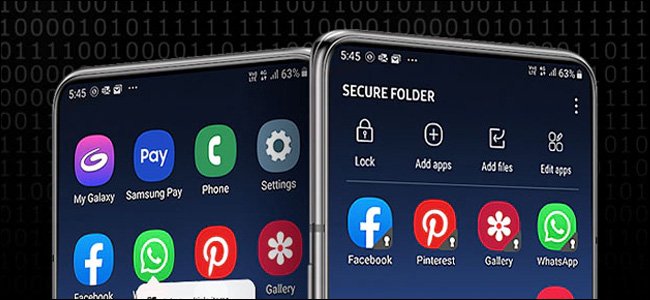
How the secure folder works
Samsung Secure Folder is an application that allows you to hide a part of your phone. Uses Samsung's Knox security platform to create a new home screen protected by a password or your device's biometrics. Access to applications and files that you place in this folder is not possible unless you unlock it.
You can add an existing application to phone σας στον Ασφαλή φάκελο για να δημιουργήσετε ένα αντίγραφο της εφαρμογής. Αυτή η εφαρμογή δεν θα έχει κανένα από τα υπάρχοντα αρχεία, την προσωρινή της μνήμη, οπότε είναι ουσιαστικά μια νέα εγκατάσταση της εφαρμογής. Μπορείτε επίσης να προσθέσετε νέες εφαρμογές από το Galaxy Store ή το Play Store to install them only in Secure Folder.
Files in the secure folder cannot be opened without some verification identity. These files will not appear in normal file explorers or the Gallery app. Only apps that are already in the Secure folder can access your hidden files.
Enable the secure folder on your device
Before attempting to enable Secure Folder on your device, make sure that your device is compatible. Works with Samsung Galaxy Knox phones with Android 7.0 Nougat and newer version. The following phones are compatible with the feature:
- Galaxy S Series, starting from S6 to S10
- Galaxy Note Series, starting from Note 8 to Note10
- Galaxy fold
- Galaxy A Series, including the A20, A50, A70 and A90
- Galaxy Tab S Series, starting with the S3
Before setting up Secure Folder, you first need a Samsung account. Follow Samsung's instructions for creating an account before proceeding.
On newer Galaxy phones, such as the S10 and Note 10, the app is pre-installed. Check the "drawer" of applications on your device to confirm if you have it installed. If your phone does not have the Secure Folder application, you can download it from Play Store or the Galaxy Store.
On your phone, open the Settings app, then select Biometrics and Security> Safe folder. On some phones, the first menu may be "Screen lock and security" or simply "Security".
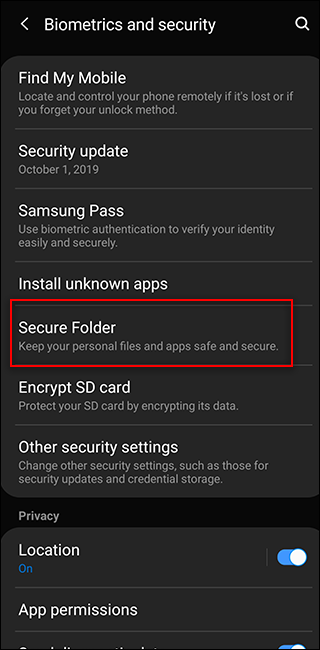
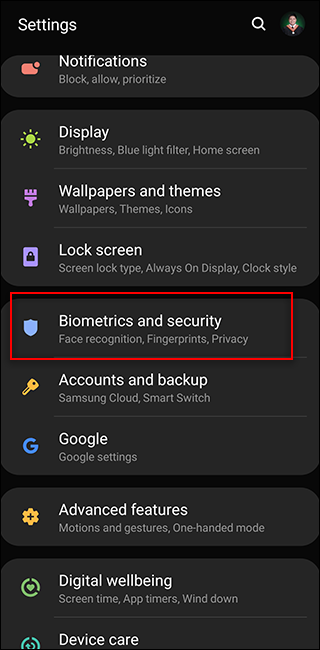
It will prompt you to sign in to your Samsung account. If you do not already have an account, create one now.
Wait for the device to create your secure folder. This process can take up to a minute. Then select a lock screen type for Secure Folder. Depending on your device, you can select a pattern, a PIN or a password, or also enable your device's built-in biometric fingerprints.
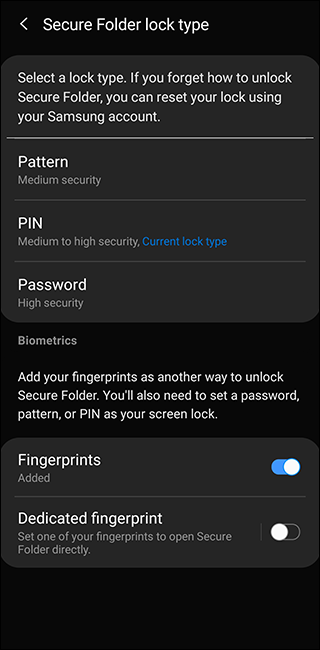
Your secure folder will be available for use like any other Android application on your device. Look for the Secure Folder app shortcut on your phone home screen or in the app drawer.
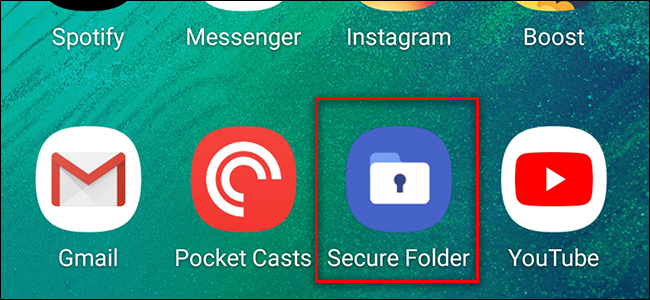
After activating your Safe Folder, it is a good idea to take a look at the settings. You can access the settings by pressing the three-dot button in the upper right corner of the Secure Folder screen. From there, you can manage your secure applications and edit lock type, auto-lock settings, account settings, and notifications. You can also customize the look and feel name of the Secure Folder icon.
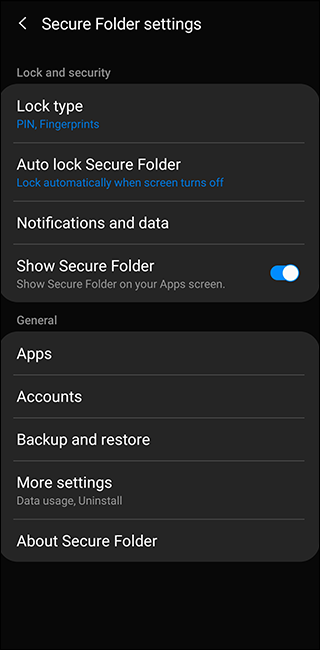
Add applications to the secure folder
You can add applications to your Safe folder, ensuring that the secure version of the application cannot start without unlocking the folder. To do this, go to the safe folder and click the "Add Applications" button. You can either add an app that already exists on your phone or install a new app from the Google Play Store or Samsung Galaxy Store.
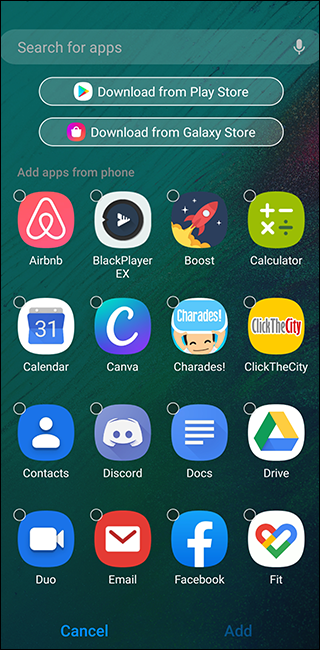
Adding an application that is already on your phone essentially creates another copy of the application on your device with its own cache and saved files. If you copy a messaging application such as WhatsApp, you can sign in to a different account than the secure folder. These applications retain their history and cache even after you exit the secure folder.
This also applies to web browsing. For example, if you install Chrome in Secure Folder, you can keep the history, links, and bookmarks stored in the secure application as opposed to incognito mode.
If you add an app from the Galaxy Store or Play Store, it will only be available in your secure folder. It will not make a copy in the main list of your applications. This is useful for applications that you do not want to appear on your homepage or search.
Aftermovement files in the secure folder
In addition to applications, you can also move some files from your phone to a secure folder. This can be done in two ways.
The first way is to go to My Files or Gallery. Select the desired files and folders using a long press. Then press the menu button with the three dots at the top right and select "Move to safe folder".
You will be asked to verify your identity again using the lock screen and then they will be moved. To access these files, use the My Files or Gallery application in Secure Folder.
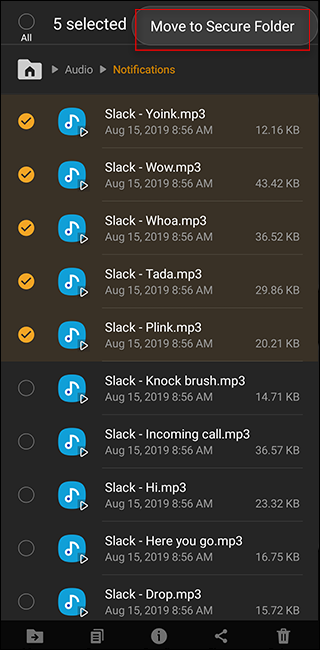
You can also go to the safe folder and click the "Add Files" button. So you can choose from either My Files or Image, Video, Audio and Document Explorer. You can then select one or more of the files and click "Finish" at the bottom of the screen to move them to the Secure folder.
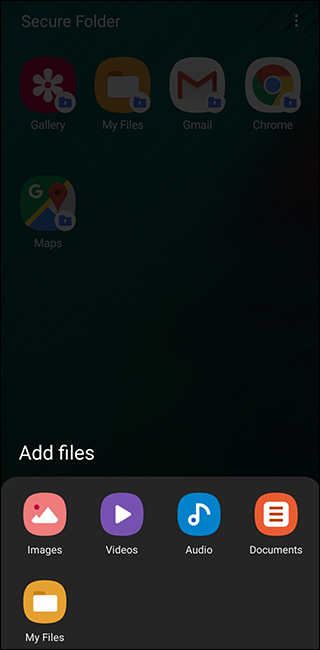
You can move your files from the Secure Folder in the same way. In the "My Files" or "Gallery" section in Secure Folder, select the files and click "Move from Secure Folder".





